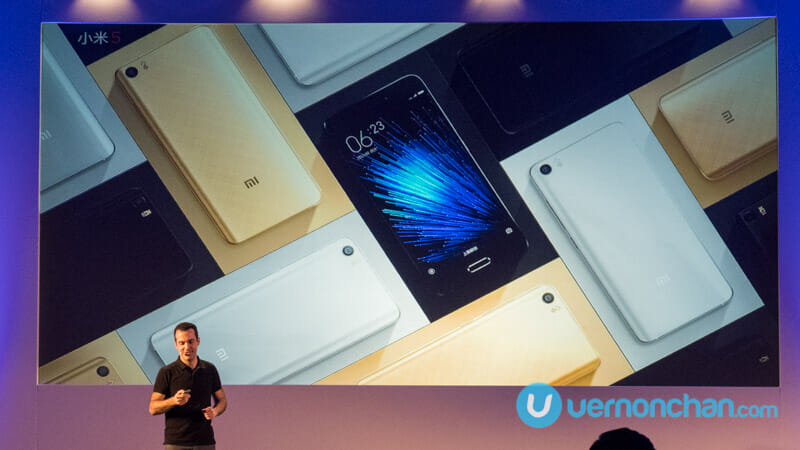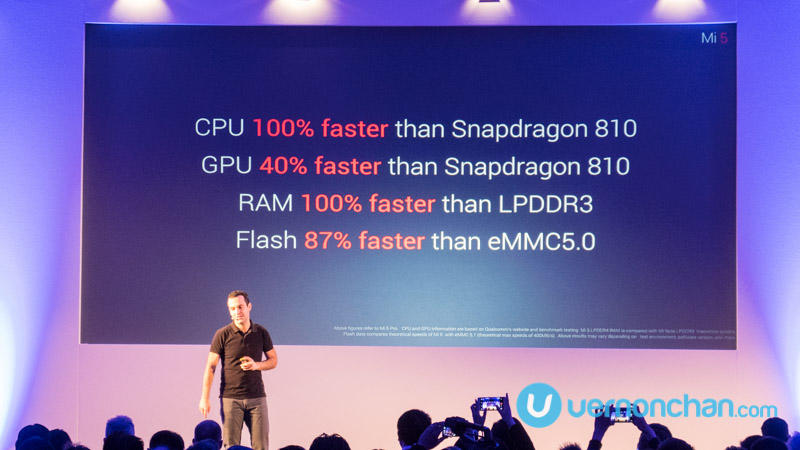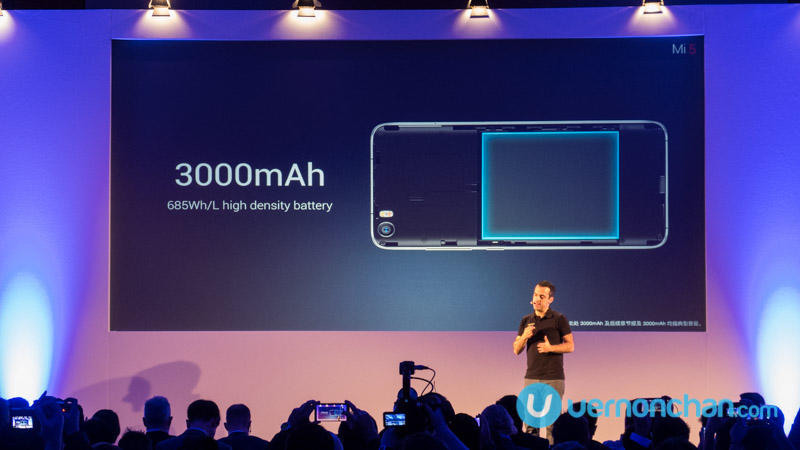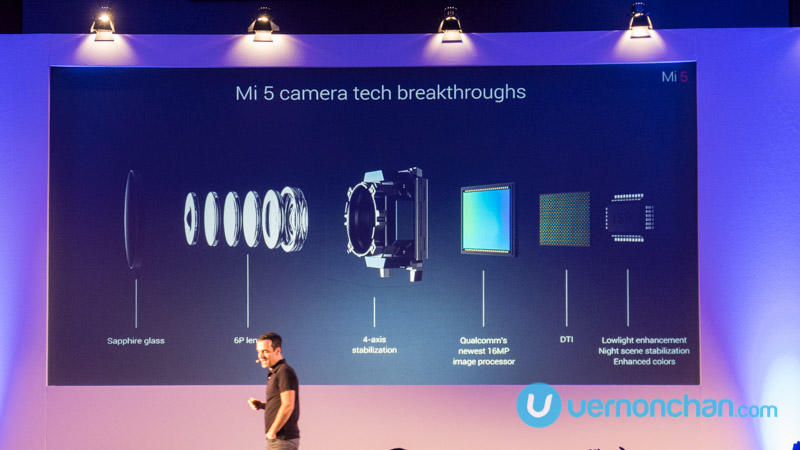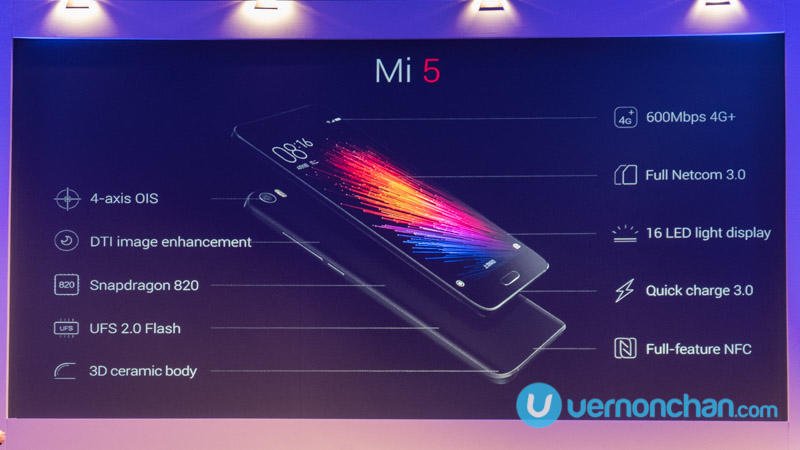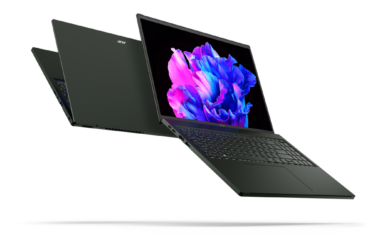At Hesperia Tower, away from the hustle of the Mobile World Congress (MWC) 2016 at Fira Grand Via in Barcelona, Xiaomi has just announced its new flagship smartphone – the Mi 5. The Mi 5 may be the first commercially available Qualcomm Snapdragon 820-powered device when it hits its home market of China on 1 March.
The Mi 5 is better than its predecessor in every way – from design and build to compute performance; to camera and battery life.
No holds barred performance
After the flop that was the Snapdragon 810, Qualcomm is eager to please with its new octa-core Snapdragon 820. And from the looks of it, it may just be a winner. Hugo Barra, Xiaomi’s VP, revealed in his presentation, that the Snapdragon 820 blows away the 810 by a mile. 100% faster to be exact. The Adreno 530 GPU is also 40% faster than of its predecessor.
Built on 14nm manufacturing process, the Snapdragon 820 Kryo CPU is quad-core, 64-bit and running at 2.5Ghz.
The performance bits don’t stop there. There’s superfast LPDDR4 RAM (1866MHz), that’s 100% faster than LPDDR3. The Mi 5 also features next-generation flash storage – UFS2.0, which is 87% faster than the aging eMMC5.0. Storage options start from 32GB all the way up to 128GB. Unfortunately, no microSD expansion, like on the Mi Note.
142,000 on AnTuTu? Are you insane?
The combination of these makes the Mi 5 “insanely fast,” says Barra. So just how powerful is the Mi5? How about a 142,084-point AnTuTu v6.0 benchmark score? Simply unbelievable.
On the front is a brilliant 5.15-inch Full HD display with Xiaomi’s patented Sunlight Display technology. It looks great, especially with a high screen-to-body ratio and almost bezel-less.
Wait, there’s more. There’s also Cat.12 4G LTE-A (600Mbps) support thanks to the X12 modem.
For audio, there’s a Hexagon 680 DSP for high-res audio performance.
In terms of battery, Xiaomi has managed to squeeze a high-density 3,000mAh battery that features Quick Charge 3.0. Get from 0-80% in an hour. Sure, it isn’t quite as fast as OPPO’s new Super VOOC Flash Charge, but it’s still a big step from the old.
Additionally, there’s also NFC that supports full send/receive NFC applications, as well as a front fingerprint sensor on the Home button. Last but not least, there’s also infrared.
Mi Note-inspired design
The bigger Mi Note and Mi Note Pro flagships were beautiful, Xiaomi’s first foray into using glass backs and 3D glass. They were in fact, the world’s first smartphones to feature 3D glass backs.
Glass however, isn’t always the most durable of material, at least not compared to metal, polycarbonate. And ceramic. So here’s the surprise, the Mi 5 features a nano-ceramic zirconia back coupled with a metal frame, something never done on a smartphone. Xiaomi said this took painstaking effort, and a new 16-step precision manufacturing process to develop. This exclusive ceramic back though, is only for the Pro version.
The two-year R&D on the Mi 5 seems to have paid off. Part of the win is that despite its slim profile, the Mi 5 does not have a camera bump, unlike pricier flagships like the iPhone 6s or Samsung Galaxy S6. Xiaomi is proud of this achievement, not an easy feat indeed.
The Mi 5 adopts the Mi Note’s beautiful design, a big departure from the Mi 4 of old. With a slim profile of 7.25mm, it tips the scales at just 129g.
Breakthrough camera
We learned of OPPO’s sensor-based SmartSensor OIS yesterday. Well, Xiaomi is sticking to a lens-based solution, but it’s no less impressive. The camera features a 6-element lens protected by sapphire glass and comes with 4-axis stabilization. It uses Sony’s latest IMX298 16MP sensor that has PDAF and DTI (pixel-to-pixel isolation). It’s complemented by the Qualcomm Spectra, a high performance image processor that supports 4K video and improves low-light performance.
Perhaps the single most impressive thing is the OIS. Conventional lens-based systems use a two-axis solution. The 4-axis OIS on the Mi 5 is simply better.

Judging from camera tests as well as sample footage and stills, it does look impressive indeed.
For the front, the Mi 5 has brought over the 4MP unit from the Mi Note.
Barra also announced Mi Video Calls, a video chat platform that supports multi-party video calls, real-time features and more. Available for Android and iOS.
The Mi 5 runs MIUI 7 which is built upon the latest Android 6.0 Marshmallow.
Pricing and availability
As usual, Xiaomi is making its flagship available in its home country first – both online at mi.com and via its physical service centres cum sales outlets – Mi Home.
Colour options include White, Black and Gold.
There will be three variants available:
- Mi 5 (Pro) Snapdragon 820 + 4GB (2.15GHz) + 128GB + 3D ceramic back cover – RMB2,699
- Mi 5 Snapdragon 820 (2.15GHz) + 3GB + 64GB + 3D glass back cover – RMB2,299
- Mi 5 Snapdragon 820 (1.8GHz) + 3GB + 32GB + 3D glass back cover – RMB1,999
Look out for a quick hands-on with the device.
Check out the Mi 5 quick hands-on video:
Gallery
Photos and videos shot on a Canon PowerShot G3X.


